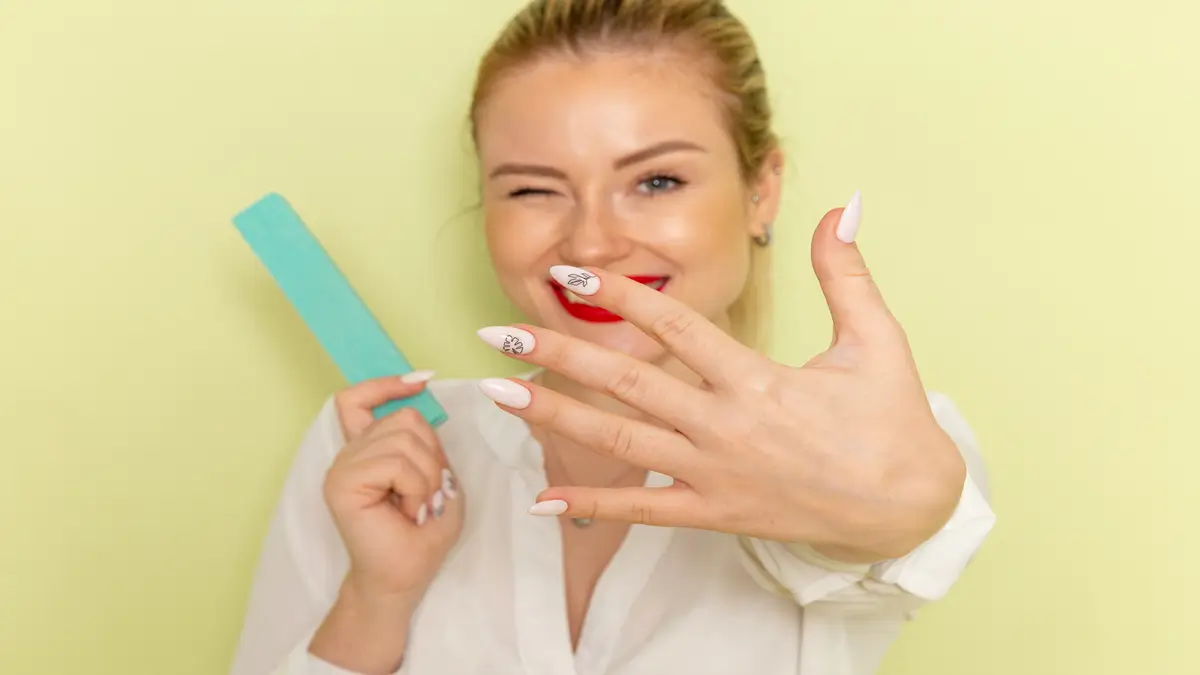Using a nail buffer is a simple way to keep your nails looking smooth and shiny, but it’s essential to do it correctly to avoid damage.
Buffing can help remove ridges, prevent splitting, and give your nails a healthy glow. By following simple tips, you can use a nail buffer safely while maintaining strong and healthy nails.
Keep reading to learn five easy tips that will help you get the best results from your nail buffer without hurting your nails.
What Is a Nail Buffer?
A nail buffer is a small tool designed to smooth and shine your nails. It typically has several sides with varying textures, including coarse, medium, and fine. You use the rougher sides to even out ridges or bumps on your nails and the smoother sides to polish and add shine.
Buffers come in different shapes, but the most common are block-shaped or paddle-shaped. Some buffers also have a shine enhancer built in to give your nails a polished look, similar to that of nail polish.
Using a buffer is simple and quick, making it a popular choice for both beginners and those who do their own nails at home.
5 Essential Tips for Healthy Nails When Using a Buffer
Using a nail buffer can make your nails smooth and shiny, but it’s essential to use the proper techniques and tools to achieve this. Taking care of your nails while buffing means preventing damage and keeping your nails strong.
- Buff Gently and Avoid Over-Buffing
When you buff your nails, use gentle pressure. Pressing too hard can wear down your nail plate, causing weak and thin nails.
Buff in one direction only. Avoid back-and-forth motions, as this can create rough spots and uneven surfaces. Limit buffing to just a few strokes per nail. Over-buffing can make your nails softer and more likely to break. Use a light to medium-touch approach. If your nails feel hot or sensitive, stop buffing immediately.
- Maintain Clean Tools and Surfaces
Always keep your nail buffer clean. After each use, brush off any dust and wipe the surface down with a dry cloth. Avoid sharing your nail buffer with others. Dirty tools can transfer bacteria or fungi that may cause infections.
Store your buffer in a dry place. Moist environments can damage the buffer or encourage the growth of germs. Regularly replace your nail buffer. Worn-out buffers can cause damage to your nails and are not effective.
- Choose High-Quality Nail Buffers
Pick a buffer with the right grit for your nails. Softer nails need finer grit to prevent damage. Avoid cheap buffers that wear out fast or have rough textures. These can weaken your nails.
Look for buffers designed for your nail type. Some buffers have multiple sides for shaping, smoothing, and shining. A good nail buffer helps improve shine and smoothness without thinning nails.
- Limit Buffing Frequency
Buffing too often can harm your nails. Limit the process to once every two weeks or less. Frequent buffing strips natural oils from your nail surface, making them dry and brittle.
Stick to a regular schedule, but don’t buff the same nail repeatedly in one session. Balancing buffing with moisturizing will keep your nails healthy and strong.
- Moisturize After Buffing
Buffing can strip away some of your nail’s natural oils, so always follow up with a hydrating treatment. Apply a nourishing hand cream or cuticle oil to restore moisture and protect the nail surface.
Ingredients like jojoba oil, vitamin E, or shea butter work exceptionally well. Regular moisturizing keeps nails flexible, prevents splitting, and enhances the shine you’ve achieved from buffing.
What Are Some Long-Term Nail Maintenance Habits to Adopt?
Maintaining healthy nails over time requires taking care of them both inside and out. What you eat, how you protect your hands, and the products you use all matter. These small daily choices add up to stronger, healthier nails.
- Adopt a Balanced Diet for Strong Nails
Focus on eating foods rich in protein, like eggs, chicken, and beans. Protein helps nails build keratin, the material nails are made of.
Vitamins and minerals also matter. Biotin, vitamin E, iron, and zinc support nail growth and prevent brittleness. Try incorporating nuts, leafy greens, and fruits to obtain these nutrients naturally.
Drink plenty of water, too. Hydration keeps nails flexible and stops them from cracking or peeling.
- Protect Nails From Everyday Damage
Daily tasks can wear down your nails if you’re not careful. Wear gloves when doing dishes, gardening, or cleaning to protect your nails from water and harsh surfaces.
Avoid using your nails as tools. Prying, scratching, or opening things with your nails can cause breaks or splits.
When you wash your hands, don’t skip drying your nails. Moist environments make nails softer and weaker, which can lead to damage. Gently pat them dry and keep nails neat to reduce issues.
- Avoid Harsh Chemicals in Nail Products
Some nail products can dry out or damage your nails. Choose nail polish removers that are acetone-free, as they can strip oils from your nails and skin.
Look for nail polish and treatments with fewer toxins, such as formaldehyde or toluene. These chemicals can thin nails and cause them to weaken over time.
If you use a buffer, don’t overdo it. Excessive buffing thins your nails and makes them fragile. Use gentle products and give your nails breaks from polish and treatments when possible.
Bottom Line
A nail buffer is one of the simplest tools you can use to keep your nails looking smooth and naturally polished, but like any tool, it works best when used with care.
By buffing gently, keeping your tools clean, selecting the correct buffer, limiting the frequency of buffing, and finishing with hydration, you can protect your nails instead of weakening them.
Pair these steps with good long-term habits like a nutrient-rich diet, daily protection, and avoiding harsh chemicals, and you’ll have nails that stay strong, healthy, and naturally beautiful, without visiting a salon.

